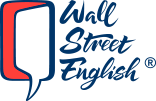Wall Street English
This article needs additional citations for verification. (November 2022) |
 | |
| Industry | Education |
|---|---|
| Founded | September 1972 |
| Headquarters | Hong Kong |
Area served | Worldwide |
| Owner | EQT Private Capital Asia and CITIC Capital |
| Website | www.wallstreetenglish.com |
Wall Street English (formerly Wall Street Institute) is an international English language learning academy[1] for adults, teens and business customers.[2] Wall Street English was established in 1972 in Italy by Italian Luigi Tiziano Peccenini.[3] The company has over 3 million alumni with a current enrolment of 180,000 students. [4] Using a franchise model, they currently operate over 450 centers in 35 countries in North Africa, East Asia, Southeast Asia, Europe, Latin America, and the Middle East.[5]
Wall Street English has been teaching English since 1972. Their curriculum is aligned to the Common European Framework of Reference for Languages (CEFR), according to a study undertaken with the support of the University of Cambridge English for Speakers of Other Languages Examination group (ESOL).[6] Wall Street English has centers in: Algeria, Argentina, Chile, Colombia, Czech Republic, Ecuador, France, Germany, Guatemala, Hong Kong SAR, India, Indonesia, Israel, Italy, Kazakhstan, Laos, Lybia, Malaysia, Mexico, Mongolia, Morocco, Myanmar, Oman, Panama, Peru, Portugal, Saudi Arabia, South Korea, Spain, Switzerland, Thailand, Tunisia, Turkey, Uruguay, Venezuela, and Vietnam.[7]
Its international offices are located in Barcelona, Spain and Hong Kong.[8] Previously its headquarters were in Baltimore.[9]
History
[edit]The first Wall Street Institute centers opened in Italy in 1972, and within two years 24 new centers opened across Italy. In 1983, Wall Street Institute expanded outside of Italy, and by the late 1980s Wall Street Institute was well established across Europe. Expansion continued through the early 1990s, when centers were opened in Mexico, Chile, and Venezuela. Beginning in the late 1990s, Wall Street Institute expanded into the Middle East and then to Asia, which has grown to be a significant part of its business.
In 1997, Wall Street Institute was purchased by Sylvan Learning Systems. In 2005, Wall Street Institute was acquired by the global private equity firm The Carlyle Group.[10] Wall Street English was acquired by Pearson plc from an affiliate of The Carlyle Group and Citic Private Equity for $92 million in cash in 2010.[11] In 2017 Pearson sold it to EQT Private Capital Asia formerly known as Baring Private Equity Asia and CITIC Capital for around $300 million.[12]
In 2013, the company launched a rebranding and introduced a new logo and united under one global name: Wall Street English.[13]
It operated more than 70 centers in China. China was the biggest market for Wall Street English.[14] Wall Street English’s Chinese entity was forced to close during the pandemic, having been hit by both Covid-19 and the government’s double reduction policy.
Curriculum
[edit]The Wall Street English program is designed for all levels of learners. They have 20 different levels of English language courses ranging from beginner to advanced.[15] Their program includes an English-only environment in their centers, highly qualified English-speaking teachers, social activities that allow students to practice English in a social, non-threatening environment, and a global online student community.
The Wall Street English Blended Learning Method,[16] created by Luigi Tiziano Peccenini and Luciano Biondo, combines different education methods of acquiring a language into one study cycle. The Blended Learning Method includes self-study, small teacher-led classes, and practice time. Students listen, read, write, speak, and practice English to gain a deep understanding of the language.
References
[edit]- ^ "Wall Street Institute Gathers Experts in English Language Learning for Inaugural Educational Advisory Board Meeting". Sun Herald. 14 October 2008.
- ^ "Wall Street Institute Showcases Unique English Language Instruction Method". REUTERS. 30 January 2008. Archived from the original on 6 November 2008.
- ^ Boyle, Matthew (23 August 2007). "WSI looks to China for profits". FORTUNE.
- ^ "About Us". Retrieved 20 February 2019.
- ^ "Wall Street English". Wall Street English.
- ^ "Wall Street Institute First To Put English Language Curriculum To The Test".
- ^ "Wall Street English Global".
- ^ "Contact Us". Wall Street English. Retrieved 10 August 2021.
C/Tuset 20-24, 5th Floor, 08006 Barcelona, Spain
- ^ "Contact Us". Wall Street English. 19 March 2015. Archived from the original on 19 March 2015. Retrieved 10 August 2021.
- ^ aboutWSI
- ^ "Pearson to acquire Wall Street Institute: acquisition extends Pearson's position as world leader in English language teaching".
- ^ "Struggling Pearson sells Wall Street English to Baring Private Equity Asia and CITIC Capital, bringing in "paltry" $100m | City A.M." Archived from the original on 18 January 2018. Retrieved 17 January 2018.
- ^ "Home". changingfutures.com.
- ^ "Wall Street English – China".
- ^ "What Makes Wall Street Institute Different?". Archived from the original on 10 March 2008.
- ^ "Your Journey Begins with our Blended Learning Method". Wall Street English. 1 October 2014.
